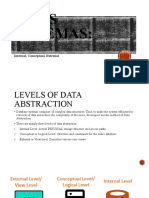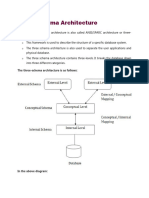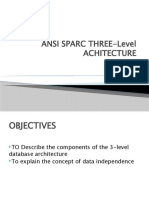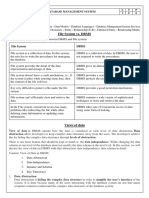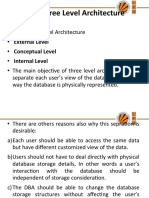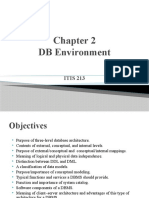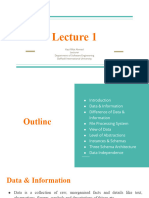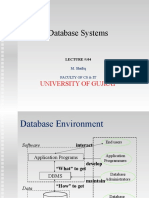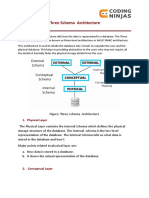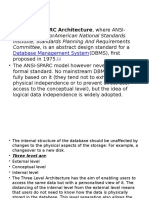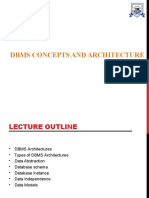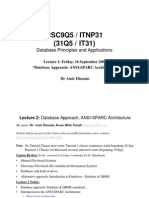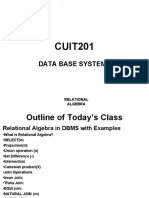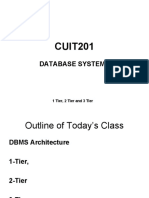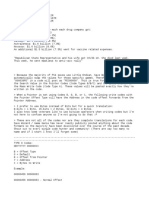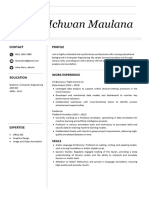0% found this document useful (0 votes)
211 views14 pagesANSI SPARC Database Schemas Guide
The document discusses the three levels of schema in a database management system according to the ANSI SPARC standard: the internal schema defines the physical storage structure, the conceptual schema describes the overall database structure for all users, and external schemas describe customized views of the database for specific users or groups. These levels of abstraction allow users to access consistent data, the DBA to change storage structures without affecting users, and the database structure to remain intact despite changes to physical storage.
Uploaded by
Njemax PanasheCopyright
© © All Rights Reserved
We take content rights seriously. If you suspect this is your content, claim it here.
Available Formats
Download as PPT, PDF, TXT or read online on Scribd
0% found this document useful (0 votes)
211 views14 pagesANSI SPARC Database Schemas Guide
The document discusses the three levels of schema in a database management system according to the ANSI SPARC standard: the internal schema defines the physical storage structure, the conceptual schema describes the overall database structure for all users, and external schemas describe customized views of the database for specific users or groups. These levels of abstraction allow users to access consistent data, the DBA to change storage structures without affecting users, and the database structure to remain intact despite changes to physical storage.
Uploaded by
Njemax PanasheCopyright
© © All Rights Reserved
We take content rights seriously. If you suspect this is your content, claim it here.
Available Formats
Download as PPT, PDF, TXT or read online on Scribd
/ 14
